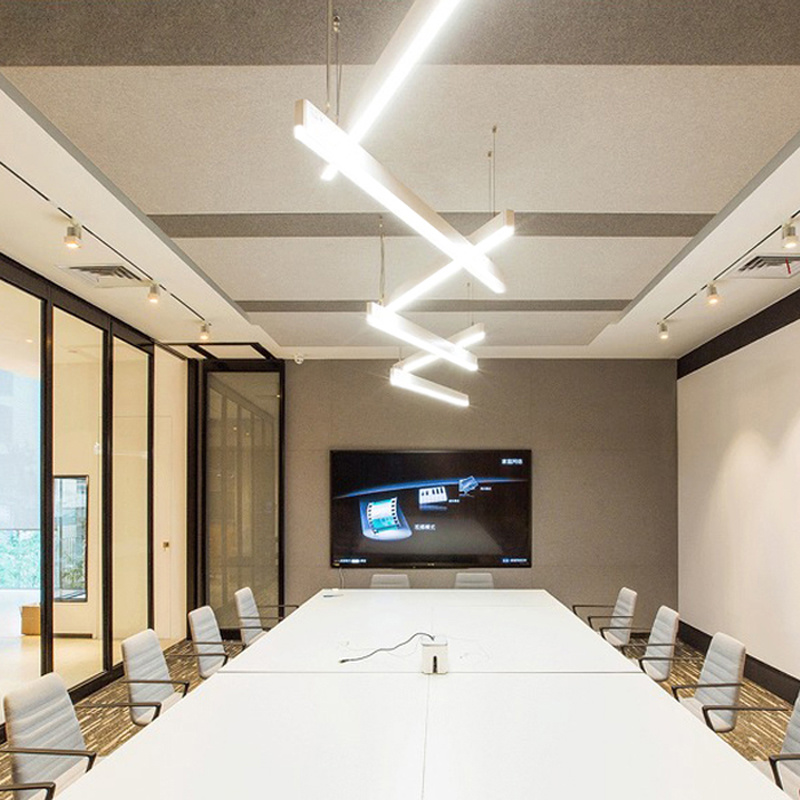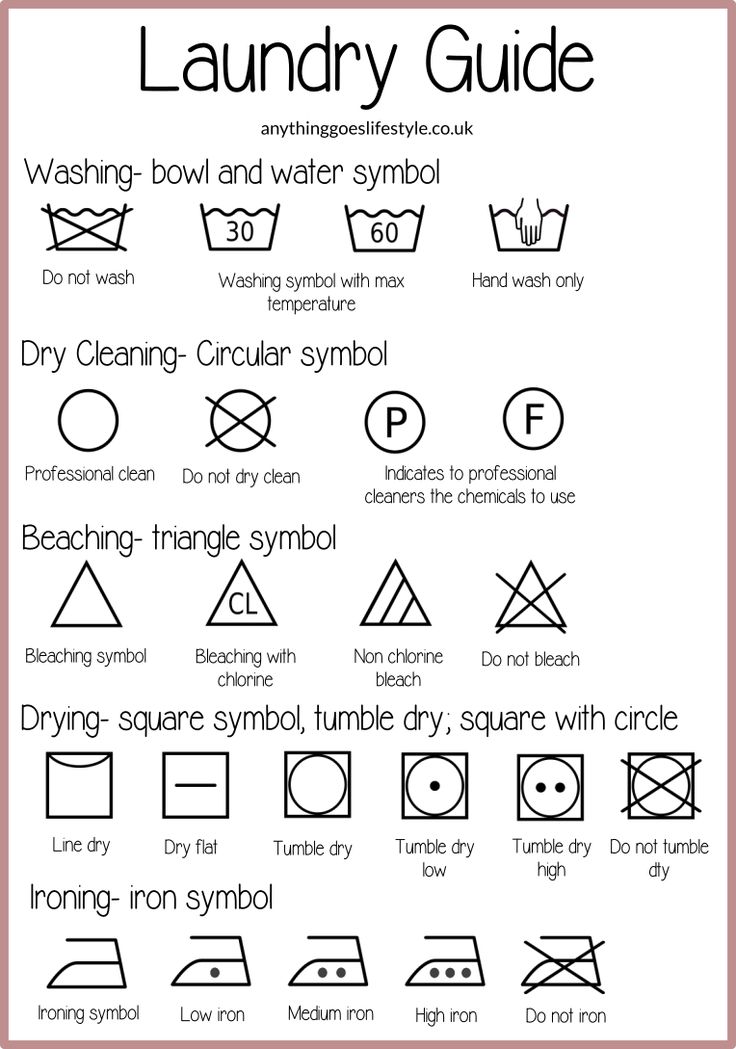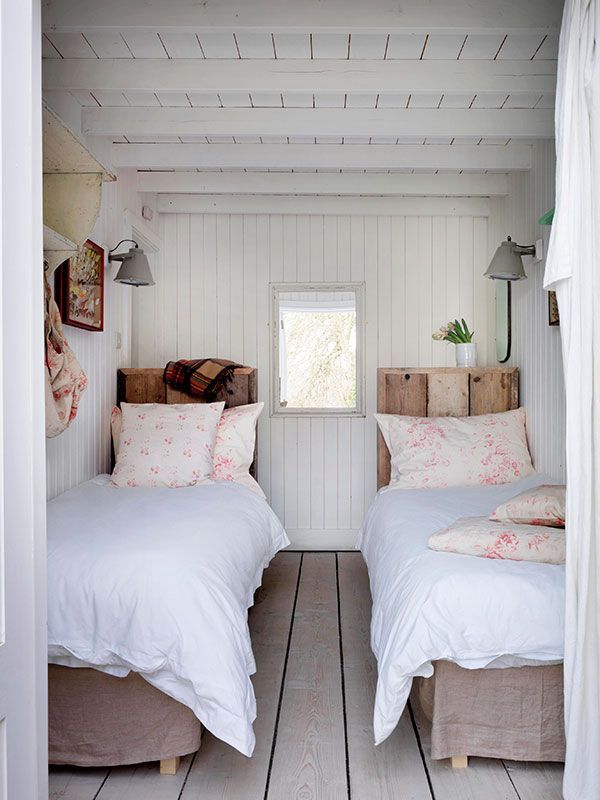Latest in lighting technology
Six recent innovations in lighting technology
Lighting systems are essential, as they provide the right amount and type of illumination where it’s needed, whether used for commercial, industrial or residential spaces. The light industry has continued to experience growth since its early days.
Researchers and scientists are working to develop new light technologies for practical use. Modern systems are capable of more than just illuminating a given area. Some double as alarms, are remote-controlled or change colors depending on user preferences.
Many new illumination products are tailored to meet evolving consumer needs. Here are six modern innovations in the industry.
HOW TO: Change system date in OS X ...
Please enable JavaScript
HOW TO: Change system date in OS X from Terminal
1. Human-Centric LED Lighting
In the mid-2000s, light-emitting diode (LED) bulbs became highly popular among consumers. According to the U. S. Department of Energy (DOE), an LED turns on when an electrical current passes through a microchip and illuminates tiny light sources known as diodes. The diodes produce heat, which is absorbed by a heat sink.
LEDs are ideal for consumers looking for energy-efficient lightbulbs because they use 75% less energy than incandescents. A growing trend in the industry is LED-based human-centric illumination (HCL). HCL lights mimics daylight and works with the circadian rhythm, which enhances well-being and comfort.
HCL systems can even influence occupants’ physical and emotional states. They offer a broad and smooth color spectrum, improving the quality of light emitted. Various buildings use LED light systems, including schools, hospitals, planes and offices. Research shows that an LED bulb lasts around 20 times longer than an incandescent version, making them a worthwhile investment.
2. IoT Smart Lights
The Internet of Things (IoT) is a relatively new technology that describes physical objects with sensors capable of communicating with one another. IoT tech is growing, and major companies like AT&T, Verizon, IBM and Microsoft are working on developing compatible systems.
IoT tech is growing, and major companies like AT&T, Verizon, IBM and Microsoft are working on developing compatible systems.
IoT sensors are placed on physical objects to make them “smart” — lights are no exception. Smart lights are a core component of the modern home because homeowners can control them with their smartphones or tablets.
Smart lights can turn on and off with a sound or motion sensor, change colors, or dim based on user preferences. One notable example of IoT smart lights is Alexa Smart Lighting by Amazon. When speaking to an Alexa-enabled device, homeowners with compatible bulbs can say, “Alexa, turn on my living room lights,” or “Hey Alexa, turn my light blue.”
3. Light Therapy Systems
Some people experience seasonal affective disorder (SAD), a form of depression that occurs during the cold, dark, and short days during the fall and winter months. These seasons tend to change mood and behavior. Light therapy is one way to treat SAD.
Light therapy devices emit certain types of artificial light that can potentially improve one’s mood. However, it’s not fully understood why this happens.
However, it’s not fully understood why this happens.
Some experts say it’s linked to the circadian rhythm, the eyes’ sensitivity to light and the brain’s serotonin system. Many light therapy systems are on the market and vary in size, brightness, price and additional features.
4. Synchronized Systems
You probably drive around your neighborhood during the holiday season and notice homes fully decorated with bright, colorful lights. You may see that a handful of your neighbors take their decorating to the next level by syncing their outdoor lights to music, creating an entertaining light show.
Synchronized light systems are popular during the holidays, but they’re also becoming a staple in the average homeowner’s living room. Philips Hue is a major player in the smart light market and offers a range of products to install in a home theater.
You can watch a movie or play video games on your TV with Philips Hue lights that flash, brighten, dim, dance and change color based on the screen’s content. These synchronized lights are not the most affordable, but they create a fun, engaging, unique visual experience.
These synchronized lights are not the most affordable, but they create a fun, engaging, unique visual experience.
5. Natural Lighting Robot
Natural light is beneficial for a few reasons, one being that it boosts vitamin D levels in humans. Depending on the size of a home or the number of windows it has, it can be challenging for people to let natural light flow into their space.
One product on the market was specifically designed to fix this problem. The company Solenica created Caia, a solar-powered, portable, cost-effective robot that brightens up any space with real sunlight.
Caia’s proprietary algorithm measures light intensity to determine the best angle to light up the user’s preferred area. According to Solenica’s website, Caia provides 10,000 lumens of light, equal to the amount of light emitted by 13 bulbs.
6. 3D-Printed Lights
3D printing, also called additive manufacturing, allows users to construct three-dimensional objects from a digital file. It’s most often used in modern manufacturing and, more recently, became a critical tool to supplement the supply of personal protective equipment (PPE) during the COVID-19 pandemic.
It’s most often used in modern manufacturing and, more recently, became a critical tool to supplement the supply of personal protective equipment (PPE) during the COVID-19 pandemic.
However, less commonly known items that can be 3D printed are lightbulbs and lamp shades. Shades are easier to print, while bulbs require more electronics and wiring knowledge.
Plenty of beginner-friendly projects available online provide step-by-step instructions on how to 3D print a lightbulb. One of the most popular 3D printed lamps is an LED bridge lamp — the design files for this project were downloaded from Thingiverse more than 27,000 times as of June 2019.
Expect More Innovations in the Future
Consumers and businesses in every sector rely on lights. Evidence suggests that it significantly impacts humans in terms of our physiology and psyche. It’s fascinating to learn about new light technologies, and as the market continues to grow, it’s expected that more futuristic concepts will make their way into the industry.
What do you think? Please share your thoughts on any of the social media pages listed below. You can also comment on our MeWe page by joining the MeWe social network.
Last Updated on August 10, 2022.
- MeWe
- Facebook Messenger
- More
Previous
Samsung Unpacked showcases the new Z Fold4 and Z Flip4
512 Audio Tempest review: An excellent mic choice for podcasting or vlogging
Next
Latest Articles
Trends to Dominate the LED Lighting Industry in 2022
The LED industry certainly takes the lead when it
comes to driving innovation, developing new technologies, and making frequent
breakthroughs.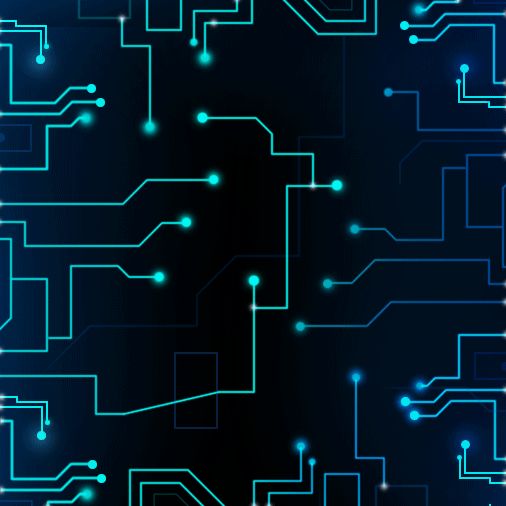 Over the past decade, the LED industry has witnessed a major
transformation, and the market is still growing at an exceptional rate,
attributed to the factors such as new product developments, rising demand for
energy-efficient lighting, and government programs for smart city development.
The growing penetration of the Internet of Things (IoT), smart sensor technology,
advancements in material and production processes are opening the way for new
advancements in LED technology. In 2020, LEDs dominated the lighting industry,
accounting for 61% of the global lighting market, and the market is projected
to grow at a significant rate in the coming years as market leaders are
expanding their innovative product portfolios.
Over the past decade, the LED industry has witnessed a major
transformation, and the market is still growing at an exceptional rate,
attributed to the factors such as new product developments, rising demand for
energy-efficient lighting, and government programs for smart city development.
The growing penetration of the Internet of Things (IoT), smart sensor technology,
advancements in material and production processes are opening the way for new
advancements in LED technology. In 2020, LEDs dominated the lighting industry,
accounting for 61% of the global lighting market, and the market is projected
to grow at a significant rate in the coming years as market leaders are
expanding their innovative product portfolios.
Here are some of the trends expected to dominate the LED lighting market.
Human-Centric LED Lighting for Enhanced Efficiency
The kind of lighting in our environment influences our
physical and emotional state, refines the space, and alters how architecture is
perceived.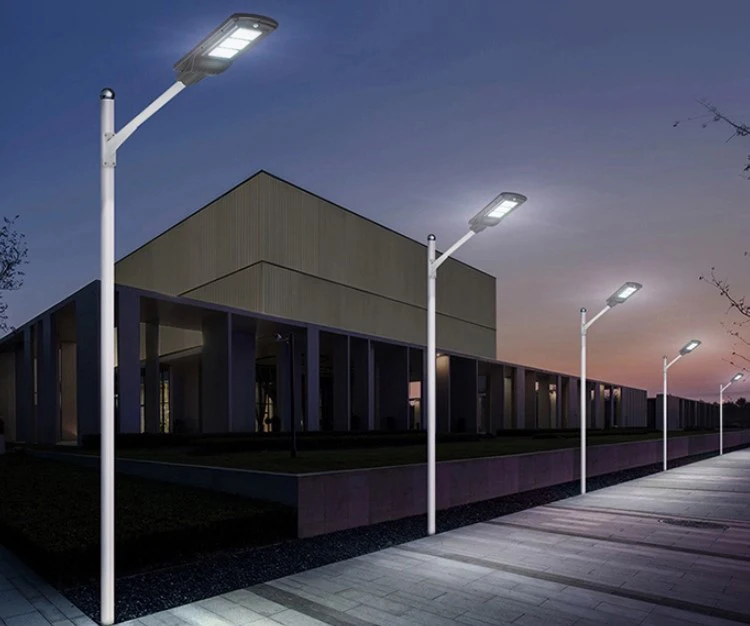 Dim and slight flickering of old fluorescent lamps can lead to
corrosive concentration and unrest, whereas spaces with the best lighting evoke
positive emotions of happiness and enthusiasm. As architectures, designers, and
builders are understanding the effects of light on humans, they are
increasingly adopting human-centric lighting to help workers become more
efficient and productive. LED-based human-centric lighting (HCL) offers many
potential advantages in offices and workspaces, increasing the value for
occupants in the environments where luminaires are installed. Healthcare
facilities are also utilizing HCL to add cooler corrector color temperatures (CCTs)
to keep employees alert and warmer CCTs in patient’s rooms to keep individuals
in comfort. Educational institutes are adopting LED-based HCL lighting to keep
the students alert and at ease. Even aircrafts install LED-based HCL systems to
provide an enhanced flight experience to the passengers by customizing light
during flight activities such as boarding, meal times, sleep, and alert
passengers as they prepare for landing.
Dim and slight flickering of old fluorescent lamps can lead to
corrosive concentration and unrest, whereas spaces with the best lighting evoke
positive emotions of happiness and enthusiasm. As architectures, designers, and
builders are understanding the effects of light on humans, they are
increasingly adopting human-centric lighting to help workers become more
efficient and productive. LED-based human-centric lighting (HCL) offers many
potential advantages in offices and workspaces, increasing the value for
occupants in the environments where luminaires are installed. Healthcare
facilities are also utilizing HCL to add cooler corrector color temperatures (CCTs)
to keep employees alert and warmer CCTs in patient’s rooms to keep individuals
in comfort. Educational institutes are adopting LED-based HCL lighting to keep
the students alert and at ease. Even aircrafts install LED-based HCL systems to
provide an enhanced flight experience to the passengers by customizing light
during flight activities such as boarding, meal times, sleep, and alert
passengers as they prepare for landing.
Due to its broad and smooth color spectrum, LED light typically provides significant improvements in the quality of light, enabling it to work with the natural circadian rhythms of human beings. Introducing HCL into a building requires the installation of tunable fixtures and smart lighting controls that can drive intensity and CCT. However, LED color tuning technology can help to automatically synchronize a building’s lighting cycle through astronomically based event times to match the lighting conditions of buildings with the exact lighting conditions outside the building. The settings can be overridden or customized as per requirements.
LED Grow Lights for Indoor Farming
The global food system accounts for a quarter of the
world’s greenhouse gas emissions. Besides, the expansion of metropolitan hubs
is gradually reducing arable lands, creating the need for more alternative
farming practices such as vertical and indoor farming. Increased efforts
towards sustainable agriculture have led to increased indoor farming adoption
that utilizes less energy, water, and land than traditional farming methods.
Using artificial LED lights in horticulture, farmers can either supplement natural
daylight or replace it entirely to produce a wealth of benefits, such as the
ability to fine-tune quality and increase yield. LED lights provide just the
right amount of light to the plant where it needs it the most and radiate less
heat than conventional lighting, which increases yields in dark months of the
year. Besides, LEDs provide the right heat-light balance to improve the
propagation of vegetables, fruits, leafy greens, herbs, and floriculture crops
in a climate-controlled environment. The LED grow lights can help retain the
unique properties of crops, enhance flavor, and maintain the nutritional value
of the crops. From the business perspective, LED grow lights save much money
for the operator since they consume less power, generate less heat, and require
less maintenance than HPS lights.
Increased efforts
towards sustainable agriculture have led to increased indoor farming adoption
that utilizes less energy, water, and land than traditional farming methods.
Using artificial LED lights in horticulture, farmers can either supplement natural
daylight or replace it entirely to produce a wealth of benefits, such as the
ability to fine-tune quality and increase yield. LED lights provide just the
right amount of light to the plant where it needs it the most and radiate less
heat than conventional lighting, which increases yields in dark months of the
year. Besides, LEDs provide the right heat-light balance to improve the
propagation of vegetables, fruits, leafy greens, herbs, and floriculture crops
in a climate-controlled environment. The LED grow lights can help retain the
unique properties of crops, enhance flavor, and maintain the nutritional value
of the crops. From the business perspective, LED grow lights save much money
for the operator since they consume less power, generate less heat, and require
less maintenance than HPS lights. Additionally, LED lights are superior to HPS
because they are cooler-temperature wise, so one does not require electricity
to maintain the temperature via fans, coolers, air conditioners, or
ventilators. High yield from LED grow lights adds to more crop productivity,
which contributes to the profitability of the business.
Additionally, LED lights are superior to HPS
because they are cooler-temperature wise, so one does not require electricity
to maintain the temperature via fans, coolers, air conditioners, or
ventilators. High yield from LED grow lights adds to more crop productivity,
which contributes to the profitability of the business.
Rising Application of LED in Automobiles
LED lights continue to mark their entry into the
automotive industry due to their benefits, such as enhanced brightness, which
facilitates safer driving. Automobile manufacturers are incorporating
intelligence into their lighting systems and leveraging advanced technology
like Adaptive Driving Beam for improved safety of drivers. Digitalization of
cars is driving the megatrend of Advanced Front Lighting Systems that introduce
new approaches in safety, comfort, and communication capabilities and put great
emphasis on exterior lighting. LEDs are rapidly gaining popularity in
automobiles due to reduced cost, high efficiency, and package size.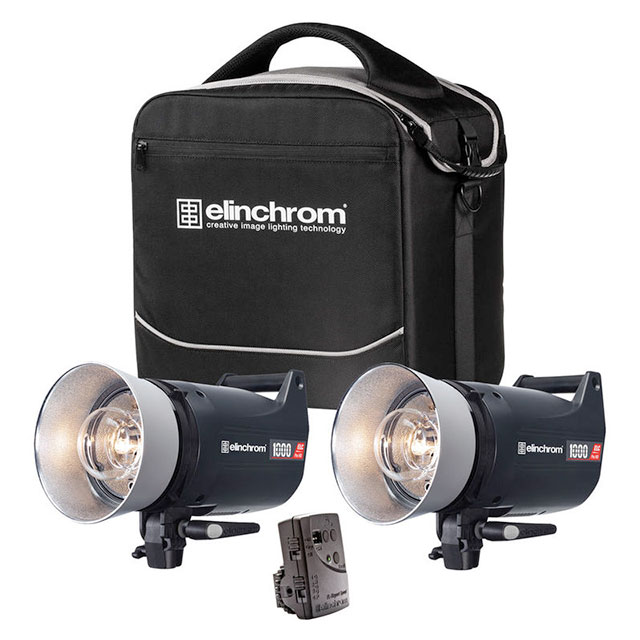 As
automakers are increasingly focusing on enhancing the riding experience of
drivers and passengers, they are adopting LED lights to the interior of the
vehicles in dashboards, telematics, door lights, reading lights, audio/video
systems, and climate control systems.
As
automakers are increasingly focusing on enhancing the riding experience of
drivers and passengers, they are adopting LED lights to the interior of the
vehicles in dashboards, telematics, door lights, reading lights, audio/video
systems, and climate control systems.
Additionally, with the increasing adoption of LEDs in headlights, LED manufacturers are constantly working to improve brightness, energy efficiency, and thermal performance for greater safety. Samsung’s electronic second-generation automotive LEDs, C-series, and FX-series offer a light efficacy of 133 Im/W, highest in high-power automotive LED packages, which provides more brightness at a low voltage. In 2021, Seoul Semiconductor Co. initiated the mass production of its next generation of wafer-integrated-chip-on-PCB (WICOP) to reduce headlamp power consumption by up to 20% and improve heat dissipation by up to 40% in electric vehicles.
Li-Fi Optical Wireless Communication
LiFi is a novel lighting technology that ensures
high-speed, bi-directional, and wireless data communication faster than
conventional Wi-Fi internet connectivity. LED capabilities with IoT
connectivity enable design engineers to simultaneously provide illumination and
transmit data. Integrating LiFi into the LED lighting world creates an
alternate path for internet connectivity in commercial spaces and offices.
While Wi-Fi uses radio waves for data transmissions, LiFi uses infrared,
ultraviolet, and visible light waves, providing high-quality transmission
speeds up to >30Mbps. Besides, the data can be stored anywhere there is LED
light, which also applies to streetlamps that can be used LiFi hotspots. LiFi
solutions are expected to witness growth in the years owing to their greater
efficacy and the advent of machine-type communication (MTC). As governments are
increasingly taking initiatives in the ICT sector to improve the functioning of
the electricity grid and optimize the efficiency of city operations, the market
players are forced to invest and innovate in LiFi. World’s prominent companies
such as General Electric, Wipro, Panasonic Corporation, Signify Holding,
Lucibel, Infinity Technology Services, etc.
LED capabilities with IoT
connectivity enable design engineers to simultaneously provide illumination and
transmit data. Integrating LiFi into the LED lighting world creates an
alternate path for internet connectivity in commercial spaces and offices.
While Wi-Fi uses radio waves for data transmissions, LiFi uses infrared,
ultraviolet, and visible light waves, providing high-quality transmission
speeds up to >30Mbps. Besides, the data can be stored anywhere there is LED
light, which also applies to streetlamps that can be used LiFi hotspots. LiFi
solutions are expected to witness growth in the years owing to their greater
efficacy and the advent of machine-type communication (MTC). As governments are
increasingly taking initiatives in the ICT sector to improve the functioning of
the electricity grid and optimize the efficiency of city operations, the market
players are forced to invest and innovate in LiFi. World’s prominent companies
such as General Electric, Wipro, Panasonic Corporation, Signify Holding,
Lucibel, Infinity Technology Services, etc. , are investing in LiFi technologies
to enable high-speed information transfer from an LED bulb.
, are investing in LiFi technologies
to enable high-speed information transfer from an LED bulb.
IoT-based “Smart” Lighting
The manner in which light is produced and delivered
has made incremental improvements. As business owners and facility managers are
becoming more conscious of economical, convenient, and safe use of energy, they
are implementing some type of lighting control system as a part of the building
management system (BMS). The smart lighting system help managers create a set
schedule for the lights to save energy and reduce costs. LED bulbs are at the
center of intelligent lighting strategy as they use up to 75% less energy than
incandescent bulbs, last 25 times longer, and produce better quality light. The
smart LED bulbs consist of software that connects to an application or smart
home assistant or other accessories, which gives one the flexibility to control
the lights remotely, eliminating the use of traditional switches.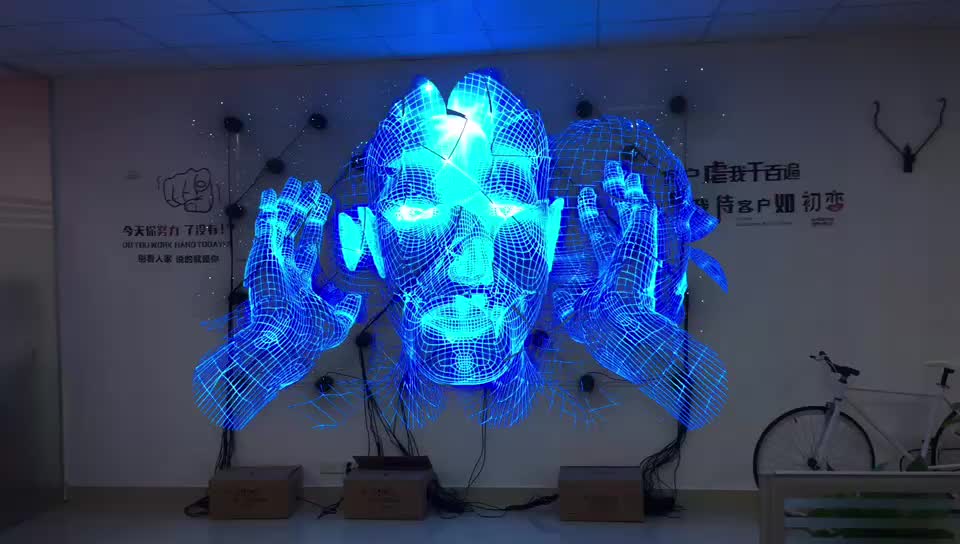 With the
rising penetration for connectivity such as cameras, audio equipment, thermostats,
or home assistants, the use of smart lighting systems is set to increase in the
coming years.
With the
rising penetration for connectivity such as cameras, audio equipment, thermostats,
or home assistants, the use of smart lighting systems is set to increase in the
coming years.
Researchers have been studying the impact of color on mood and hence developing healthy lighting and health-oriented light fixtures, and they are rapidly gaining traction in the market.
Modern Lighting Technologies - Trends and Innovations
Content:
- New Sources of Light
- Grafen: Complex Way to the Consumer
- Smart Bulb
- Autonomous Lamps
- OLED MATRICS
- MODELS CHILDRENS and Interior Complements
- 9000 9000 9000 9000 9000 9000 9000 9000 9000 Light Art
- Deconstruction of the lamp
- Works of advertisers
- Painting with light on the wall
Revolutionary innovations in artificial lighting don't happen every year. Nevertheless, there is a constant struggle for the quality, functionality, efficiency and environmental friendliness of lighting technology.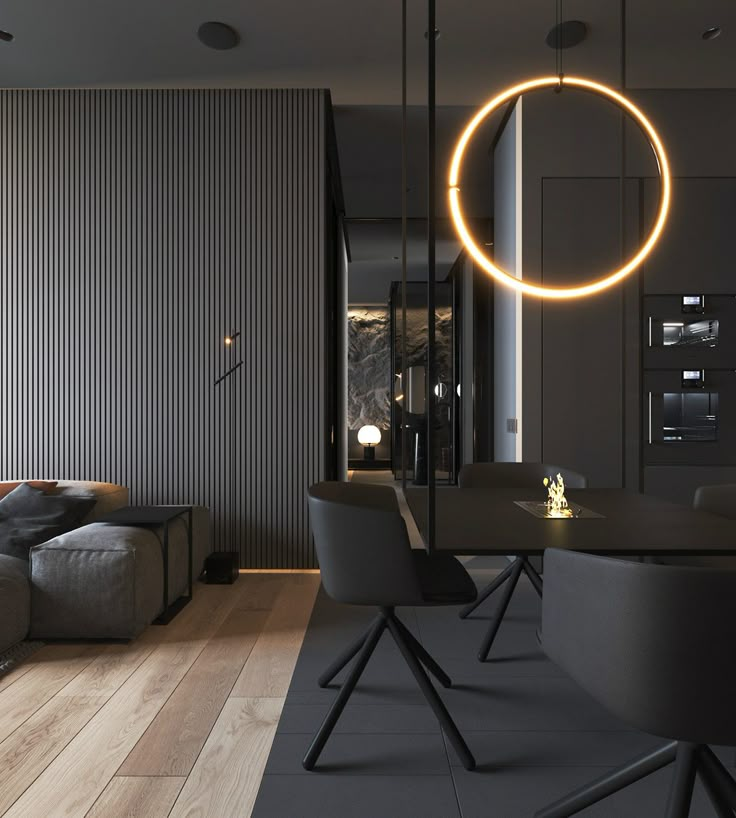 Physicists, engineers, designers, programmers and doctors are involved in this process. New trends are formed in various, sometimes unexpected, areas of work.
Physicists, engineers, designers, programmers and doctors are involved in this process. New trends are formed in various, sometimes unexpected, areas of work.
New light sources
In the last 2-3 years, technical thought has tangibly advanced in 4 areas: the use of graphene in LED devices, Smart LED bulbs, autonomy of lamps and the introduction of OLED matrices.
Graphene: a difficult path to the consumer
Graphene is a nanocrystalline carbon with unique physical properties. After the first successful prototype of a graphene filament LED bulb (graphene filament LED bulb) was created in the laboratory of Graphene Lighting from Manchester in 2015. It seemed that this is the ideal light source for residential premises:
- marketing) output of 100 lm of luminous flux per watt of power consumption.
- Uniform light distribution without glare.
- Color quality under 90%.
- Smooth spectral response without peaks or dips.
- Radiation power reduction no more than 10% after 3 years of operation.
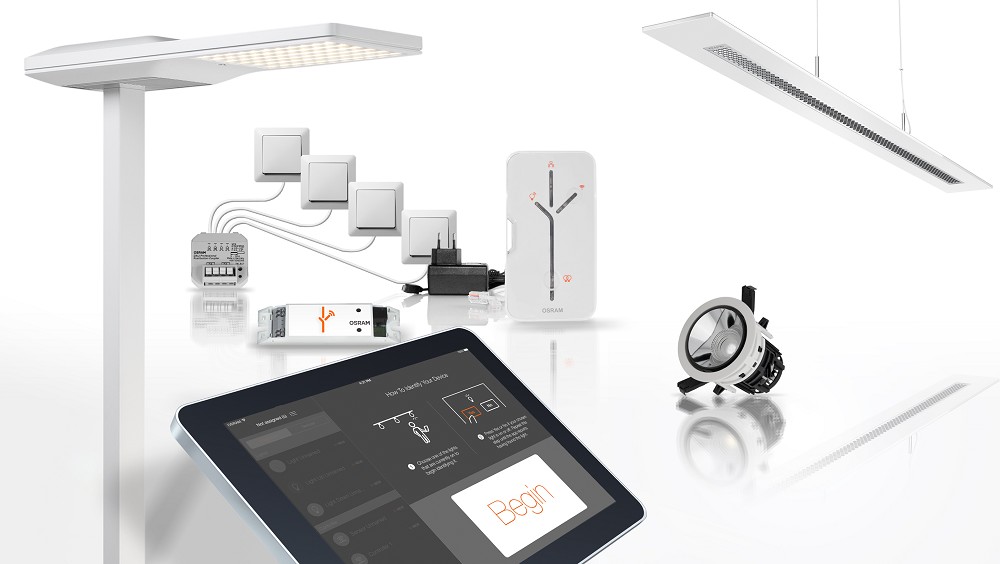
- The appearance of the light bulb is a transparent bulb with vintage filaments, without a cooling radiator, chambered for E27 or E14.
There is a long-awaited combination of all the advantages of LEDs with the advantages of incandescent lamps. This is achieved due to the efficient removal of heat from miniature diodes covering the filament (thread). The branch is provided by graphene (located between the diodes and the metal substrate) and helium (filling the flask). But not everything is so simple ...
Series production started in 2017 by Graphene Lighting and another British company, sera Led Lighting, did not lead to a market fix. The lack of production capacity and the high price of a light bulb in the EU - about £ 8.00 (660 r) played a role. Information about the new product was used by scammers offering low-quality filament lamps under the guise of innovative ones. At the current moment (October 2019), almost all ICs available at retail as "graphene" are counterfeit!
Fortunately, at the beginning of 2019, Graphene Lighting began building a large factory in China and announced a competitive price reduction for their product as early as 2020.
Smart Bulb
The new generation of smart bulbs is like a smart home system hidden in the ICs themselves. These devices are not cheap, but they eliminate the need to install control equipment. Dimming and changing the color temperature of the Smart Bulb is done on command from a computer, smartphone, or in accordance with the selected schedule. Only some devices will require the included Wi-Fi hub to be connected to your router.
GU10
 They allow you to simulate a candle flame and other cyclic scenarios with a fixed rhythm of changing brightness and color. The list even includes work in the classical color-musical setting mode.
They allow you to simulate a candle flame and other cyclic scenarios with a fixed rhythm of changing brightness and color. The list even includes work in the classical color-musical setting mode. The color temperature is adjustable for both types of bulbs. But, if color sources can emit light in the entire visible spectrum, the work of white ones is regulated in the range of 2700 ... 6500 K (ranges differ slightly for different systems).
Systems can be accessed using voice assistants Siri, Alexa, Google Assistant. The number of lamps controlled by one system depends on the supplied software and, on average, is 50 pcs.
Fig. 2. LFX+ light bulb control in Google play appSelf-contained lamps
The concept of a self-contained lamp is simple: it continues to operate from the built-in battery when the main power is turned off. The concept works as a backup power system for a single IC, or as an emergency lighting option.
The leader in this specific niche is Ivition Pioneering Technology.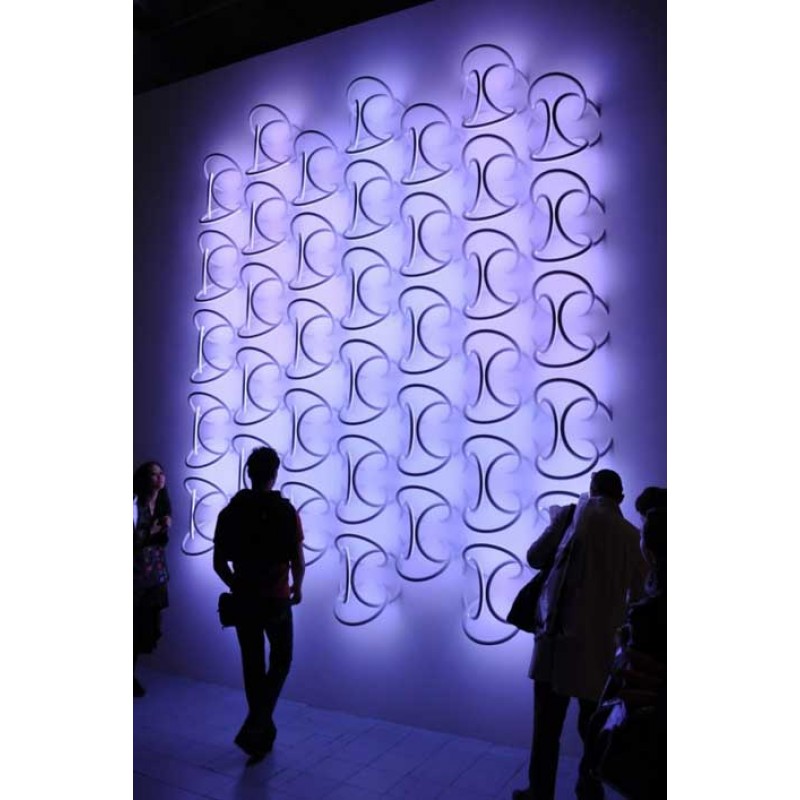 Their only product, the ON Bulb, is capable of:
Their only product, the ON Bulb, is capable of:
- Provides lighting at the level of a 60-watt incandescent bulb for 3 hours or a 30-watt bulb for 5.5 hours after a power outage.
- Does not require any specific wiring, installation or configuration.
- In mains mode, operates in a wide voltage range - 90 ... 265 V.
- Has an internal single-stage dimmer (50% / 100%).
If you convert the capacity of the built-in IVITI ON battery to milliamps per hour, you get about 80,000 mAh. Several times more than common powerbanks! Therefore, the device has impressive dimensions in comparison with conventional light bulbs of the same power and, unfortunately, no less impressive price. Therefore, sales are only on pre-order.
Fig. 3. IVITI ON rechargeable light bulb compared to conventional 60-watt light sources The company continues to win awards in annual innovation and environmental competitions ... and is in talks with laboratories developing lithium polymer batteries. We live in an interesting time: already in 2020-2021, an updated IVITI ON is expected to enter the mass market with reduced dimensions based on a Li-Po battery and, most importantly, at a competitive price.
We live in an interesting time: already in 2020-2021, an updated IVITI ON is expected to enter the mass market with reduced dimensions based on a Li-Po battery and, most importantly, at a competitive price.
OLED panels
Organic Light Emitting Diodes (Organic Light Emitting Diode) functionally differ from inorganic ones in their low specific luminous flux over the area. OLED sources give out only 1700 lm/m². Therefore, a 600 x 600mm OLED lighting panel (Armstrong ceiling section) emits less light than a 60W incandescent bulb (612lm vs 800lm).
It would seem, why then use them at all? It's all about the unique design and operational characteristics of these ICs:
- Flexibility - the organic base (polymer film) with a thickness of 0.1 - 0.3 mm allows you to give any shape to the lamp.
- Simple luminaire design - as an option, you can simply stick the matrix with double-sided tape on the wall or ceiling and connect it to the mains. Uniform soft lighting is realized without reflectors and diffusers.

- OLED matrices can be transparent - these can be used in "smart" windows, which, when turned on, lose their transparency, turning into lighting panels.
- Service life without degradation - up to 100,000 hours.
Since the technology is still very expensive, OLED panels are almost never used for general lighting. Quite another thing is night lamps and decorative lighting in the style of Light Art.
Fig. 4. Table lamp with LED matrix Photon from Flos. Design Philippe StarckDespite the high cost of the OLED matrix itself, night lamps in the form of sconces, table and pendant lamps are acceptable for high and medium price groups. Such a technical and economic effect is achieved due to the small required luminous flux and the simplicity of the design.
Fig. 5. Lighting OLED matrices produced by LG ChemLuminaire designs and interior trends
The key exhibitions of Euroluce lighting equipment over the past 3 years give a picture of the gradual death of some and the emergence of new trends. The anti-functional aesthetic style of imitation of plafonds and lampshades with graphic black frames is gradually becoming a thing of the past. The role of built-in spotlights is also reduced. The latter is due to the trend of "exposure" of ceilings from suspended structures.
The anti-functional aesthetic style of imitation of plafonds and lampshades with graphic black frames is gradually becoming a thing of the past. The role of built-in spotlights is also reduced. The latter is due to the trend of "exposure" of ceilings from suspended structures.
Having trouble choosing LED lights?
We will prepare a full calculation of the cost, the necessary equipment and 3D visualization for lighting your facility. This is FREE - even before the purchase and conclusion of the contract, you can find out: "How much and which lamps will fit?", "How much will it cost?", "What will it look like?" and even “How long will the counter wind?”.
More about this
More and more designers and factories are trying to update the following topics:
- Light Art with modular LED panels.
- Separation of light source and reflector/diffuser into 2 separate units.
- Wireless lighting.
- Penetration of advertising technologies into interior lighting.
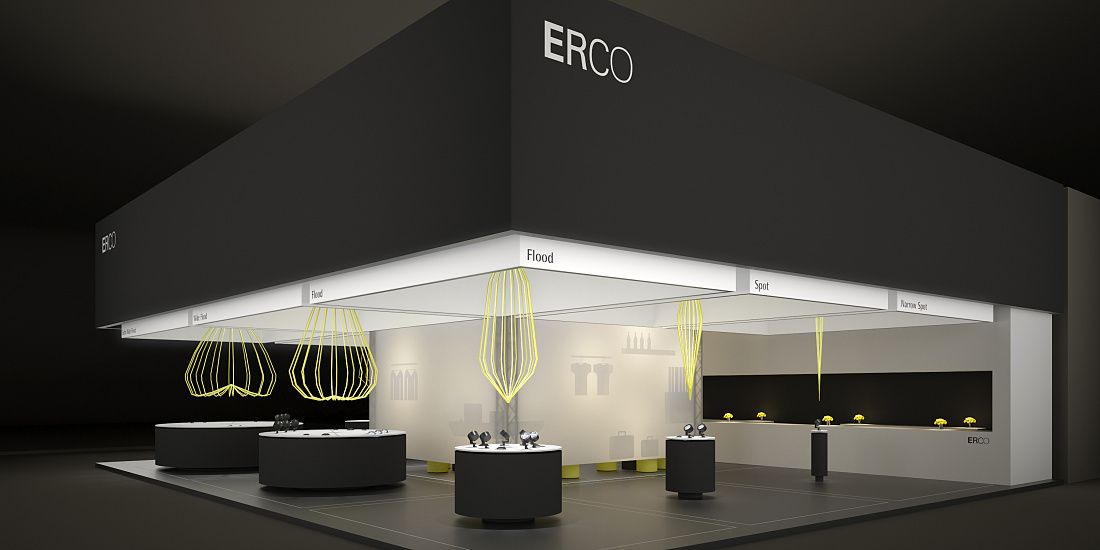
- General illumination and backlight inversion.
- Shadow drawings.
Modular Light Art
Perhaps the most striking example of the technology is Nanoleaf's Light Panels. The authors of the idea received money for production using crowdfunding on the Kickstarter platform. We can say that the potential consumer was delighted with the product even before it appeared.
Light Panels is an intelligent decorative light system that looks like a set of triangular modules. Each module is an RGB LED matrix that can glow in any color. Light Panels is controlled from a computer or smartphone via Wi-Fi, using touch and voice commands from Siri, Alexa, Google Assistant. A separate option is to work in the color-musical setting mode using the rhythm module integrated into each element.
Fig. 6. Assembly and operation of Nanoleaf Light PanelsLuminaire deconstruction
One way to combat glare is to use reflected light. To do this, it is not necessary to design lamps with massive diffusers and lampshades.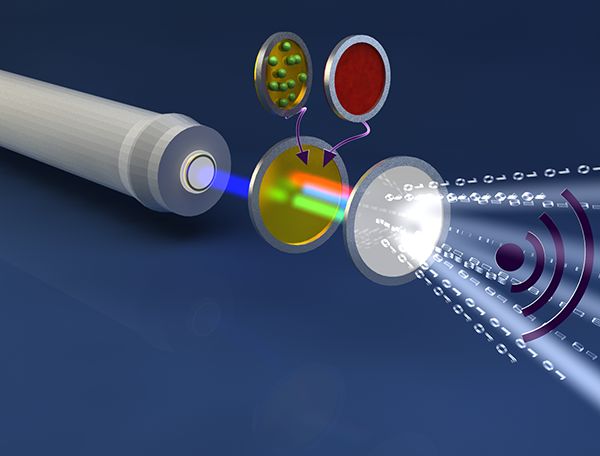 You can follow the principle of organizing studio lighting, using spaced spotlights and softboxes, or another way of separating functions.
You can follow the principle of organizing studio lighting, using spaced spotlights and softboxes, or another way of separating functions.
Works of advertisers
Traditional advertising lighting technologies are increasingly penetrating into the residential interior space. Compositions of neon tubes and LED strips in the spirit of Pin-up era signs, light boxes, three-dimensional geometric shapes and acrylic letters are the favorite techniques of designers creating interiors in kitsch style today. Sometimes the monotony of minimalistic spaces is also diluted with such bold inclusions.
Fig. 8. Neon, lightbox and light cube in the interiorPainting with light on the wall
A shadow pattern is a powerful decorative technique. The fixture typically consists of a lamp with a reflector aimed at an acrylic or wire frame silhouette. The shadow pattern is adjusted by changing the distance from the reflector to the silhouette.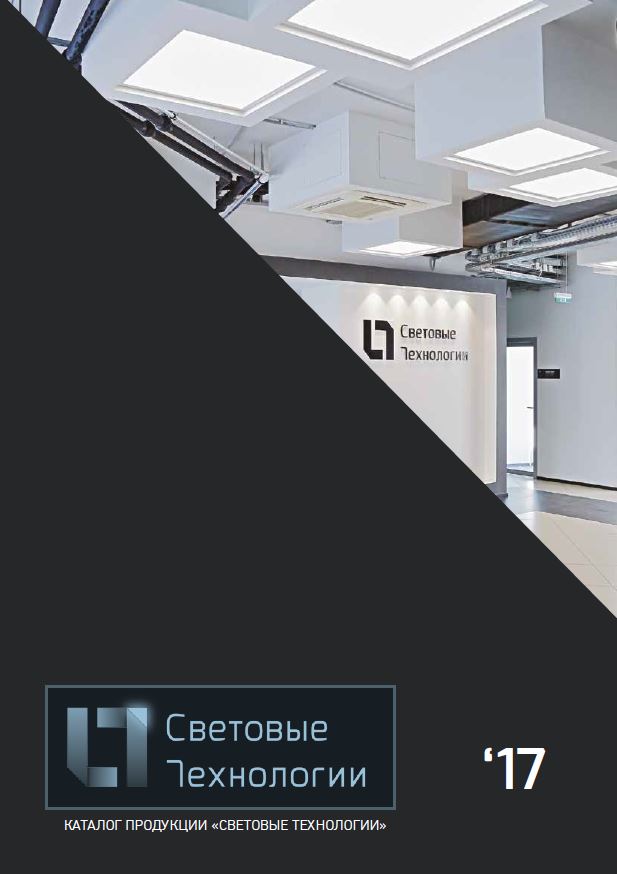
Difficulties with the choice of lamps?
We will prepare a full calculation of the cost, the necessary equipment and 3D visualization for lighting your facility. It's FREE OF CHARGE - even before the purchase and conclusion of the contract, you will be able to find out: "How many and which lamps will fit?", "How much will it cost?", "How will it look?" and even “How long will the counter wind?”.
View all solutions
Six new technology solutions for the lighting industry
Several different new technology solutions have emerged in the lighting industry over the past few years.
The development of modern technologies makes serious changes in all spheres of our life, often changing some things beyond recognition. However, the most significant changes new technologies have made in the lighting industry.
Several new technologies have emerged in the lighting industry over the past few years.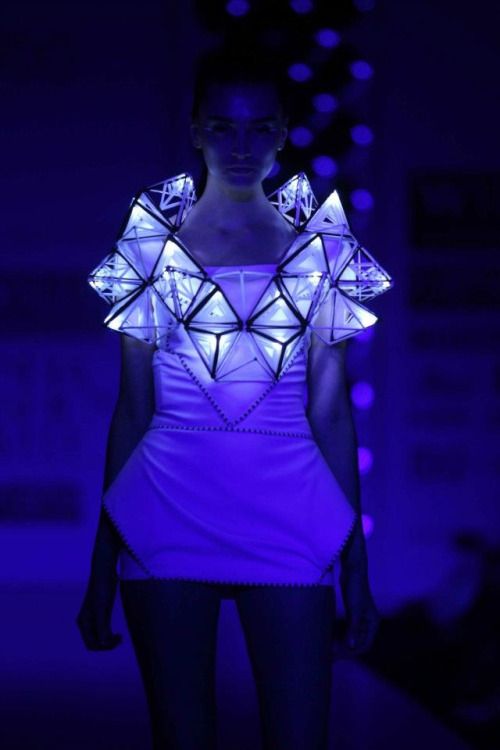 Here are six dynamic changes that will be the foundation of today's lighting industry.
Here are six dynamic changes that will be the foundation of today's lighting industry.
1
Internet of ThingsThe Internet of Things is a technology that will not only connect smartphones and computers to the Internet, but will also enable gadgets to be connected to refrigerators, coffee machines, lighting fixtures and many other things.
This is a technology that allows you to remotely control the operation of lighting fixtures using mobile gadgets. This means that from now on, you can turn the lights on and off from anywhere in the world, using built-in sensors that can connect to smartphones and computers.
2
Wireless LightingToday everything in the world is becoming wireless and compact, and the lighting industry has not been left out of this trend either. Especially when it comes to the implementation of modern projects.
In addition to radio frequency communication systems, there are also technologies that allow the use of power lines for communication.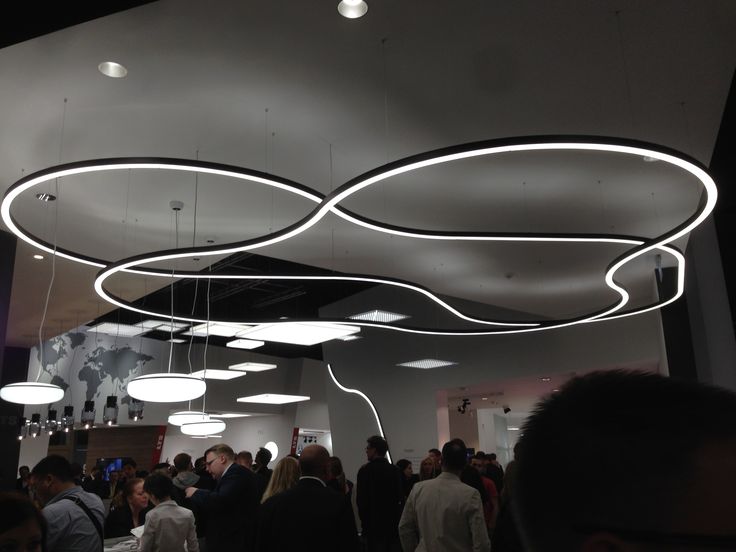 In other words, data coming from user devices and transmitted to them goes through these same electrical wires.
In other words, data coming from user devices and transmitted to them goes through these same electrical wires.
Even traditional wired lighting systems use wireless technology to control them wirelessly.
3
LEDs for every home!Light-emitting diode lamps (LED) are a new lighting solution that is permeating everywhere today. Lighting systems based on LEDs have many advantages, having a positive impact on both the environment and human health.
These smart luminaires are more energy efficient, consume less electricity - which is immediately noticeable on electricity bills. In addition, they emit less heat, thereby reducing carbon monoxide emissions into the atmosphere.
4
CommunicationAs LED lighting technology becomes more and more versatile, the possibilities for control or at least communication have improved significantly.
Dimmers and sensors have long been part of the lighting industry, but with advances in digital communications, this trend towards control is becoming an integral and important part of the industry.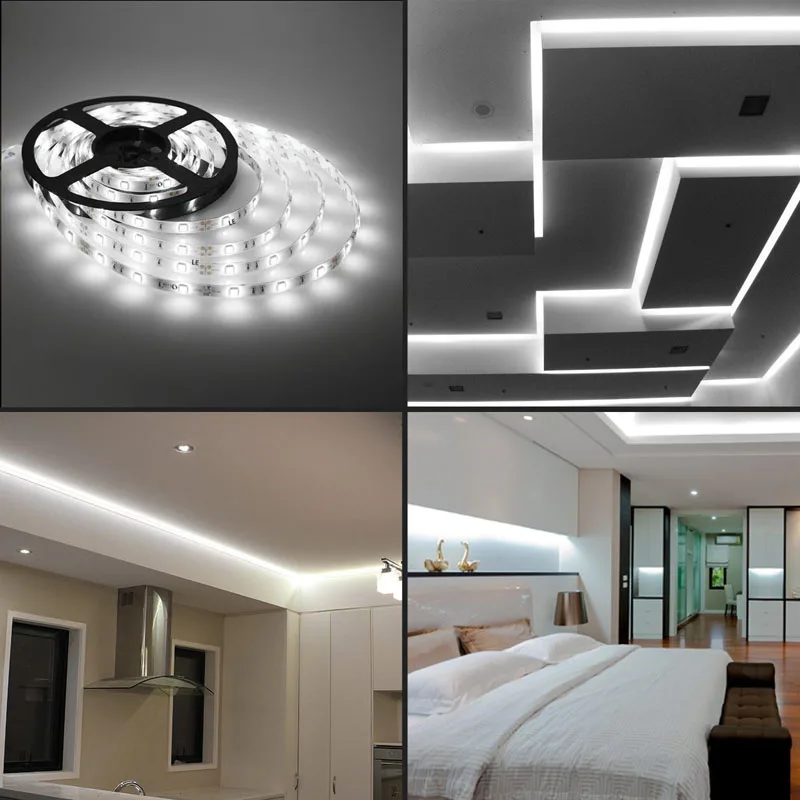
5
Recessed luminairesAnother new lighting trend that has received additional impetus with the spread of LED lamps is the proliferation of recessed luminaires. This is due to the fact that LED lamps do not require frequent replacement.
Today, manufacturers install fixtures directly into the walls and ceiling, allowing them to fit into the interior as much as possible. Architects create projects that are immediately integrated with lighting fixtures.
6
Li-FiLight has long been more than just something that makes the house brighter. Today, it has evolved into data transmission technology – Li-Fi. This technology, somewhat reminiscent of Wi-Fi, allows you to use internal LED lamps to create a communication system.
This technology will turn shops, museums and indoor spaces into habitable spaces where data will be transformed using available light sources.
These are just a few of the new technological trends in the lighting industry that are designed to completely change the usual ideas about this area.